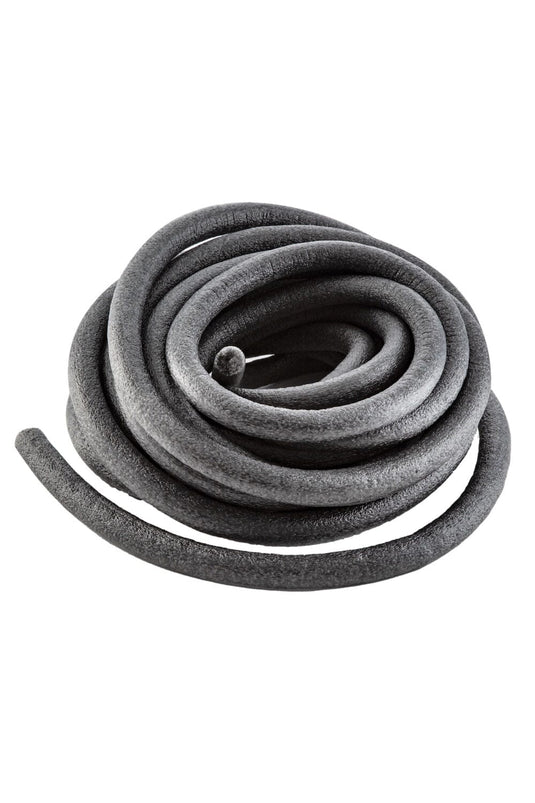Round Closed Cell Backer Rod - 5/8" x 1550' Coil
Special Note: For smaller orders, a minimum shipping cost of $15 will be applied.
Round Closed cell backer rod is probably the most common and popular form of backer rod. It does not hold moisture and actually repels water. Closed cell backer rod comes in a variety of sizes ranging from 1/4" to 5” wide and can be used on both the exterior and interior of the home.
Backer Rod is used for Chinking joints greater than 1/4". Backer Rod is a round, flexible length of extruded polyethylene (it looks like a rope made of foam). Backer Rod is used to create a surface backing for the chinking. At the same time, it insulates and saves on the amount of chinking material used. But most important, Backer Rod acts as a bond breaker allowing the chinking to adhere only to the top and bottom of the logs, not to the backer rod. This allows the chinking to flex naturally as the logs shrink, instead of peeling away.
Why Use Backer Rod:
Backer rod is a bond breaker, which means caulk and chink does not stick to it. When put behind caulking, it allows the caulking to only stick at the top and bottom of the joint where it touches the log (2 point adhesion). This allows the material to be pulled only in two directions (up and down) and react to movement like a rubber band.
If no bond breaker is in place, the caulking will stick to the back wall, top and bottom of the joint (3 point adhesion). This holds the caulking in place and does not allow it to move, causing failure.
Backer rod also greatly helps control the depth of the sealant as it is being installed to insure that the optimum amount of material is put into place. If too little material is installed, premature “cohesive failure” can occur. If too much is installed, the sealant is wasted and your costs are greatly increased.
Round Closed Cell Backer Rod - 5/8" x 1550' Coil
Special Note: For smaller orders, a minimum shipping cost of $15 will be applied.
Round Closed cell backer rod is probably the most common and popular form of backer rod. It does not hold moisture and actually repels water. Closed cell backer rod comes in a variety of sizes ranging from 1/4" to 5” wide and can be used on both the exterior and interior of the home.
Backer Rod is used for Chinking joints greater than 1/4". Backer Rod is a round, flexible length of extruded polyethylene (it looks like a rope made of foam). Backer Rod is used to create a surface backing for the chinking. At the same time, it insulates and saves on the amount of chinking material used. But most important, Backer Rod acts as a bond breaker allowing the chinking to adhere only to the top and bottom of the logs, not to the backer rod. This allows the chinking to flex naturally as the logs shrink, instead of peeling away.
Why Use Backer Rod:
Backer rod is a bond breaker, which means caulk and chink does not stick to it. When put behind caulking, it allows the caulking to only stick at the top and bottom of the joint where it touches the log (2 point adhesion). This allows the material to be pulled only in two directions (up and down) and react to movement like a rubber band.
If no bond breaker is in place, the caulking will stick to the back wall, top and bottom of the joint (3 point adhesion). This holds the caulking in place and does not allow it to move, causing failure.
Backer rod also greatly helps control the depth of the sealant as it is being installed to insure that the optimum amount of material is put into place. If too little material is installed, premature “cohesive failure” can occur. If too much is installed, the sealant is wasted and your costs are greatly increased.


